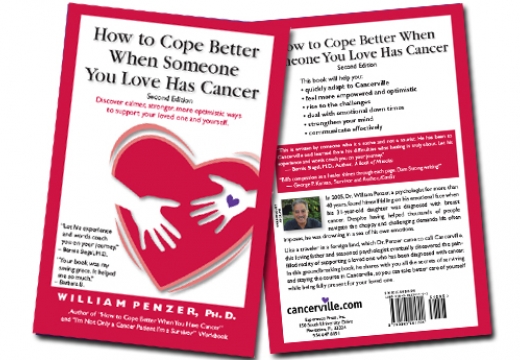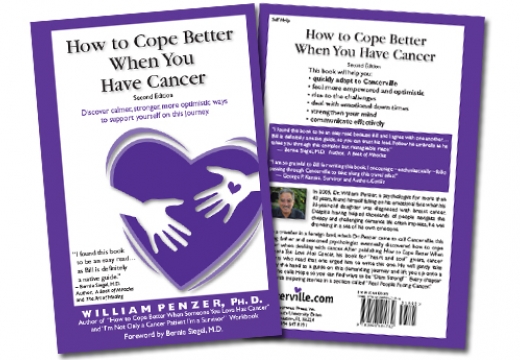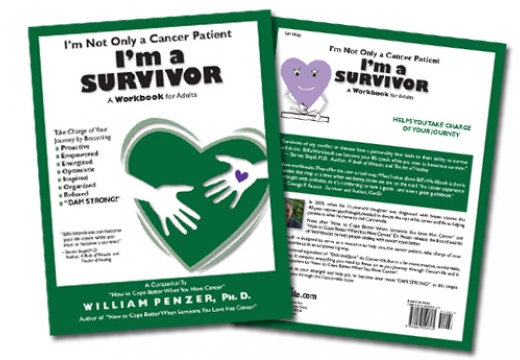Here is the “permanent” link for your show:
http://www.powerfulpatient.org/?p=1363
It will be up there for at least a year. You are welcome to link to it.
You had asked me to share the information about resources for patients with the diseases we work with.
Von Hippel-Lindau is a genetic flaw that can lead to tumors of the retina, brain, spinal cord, kidneys, pancreas, adrenal glands, and inner ear. Untreated, it can cause blindness, deafness, mobility issues, kidney cancer, or pancreatic neuroendocrine tumors (a form of pancreatic cancer). In 1993 I founded the VHL Family Alliance and wrote the first version of the VHL Handbook to help patients and their local doctors understand how VHL works, and how to manage their health. Over the past 20 years — with no drug to help — the average life expectancy for someone with VHL has gone up 17 years, much of which is attributable to the Handbook and to the work we have all done together to raise the visibility of VHL.
In 2004 I helped a small group of people with Hereditary Leiomyomatosis and Renal Cell Cancer to form the HLRCC Family Alliance under the wing of the VHLFA. HLRCC incudes a particularly aggressive kidney cancer, skin bumps, and many large uterine leiomyomas (fibroids). Since they are an even smaller disease population (about 1/10 the size of the VHL population) and the disease is relatively newly described (12 years ago), we have worked hard to gather information from doctors and patients to create an action plan for management. We put out the first edition of the HLRCC Handbook about a year ago, and have continued to gather, refine and validate information. The second edition is just now going into print! It should show up in Amazon in about one week.
Similarly, there is a Foundation for Birt-Hogg-Dube syndrome, another genetic kidney cancer which includes skin bumps and lung cysts which can lead to spontaneous pneumothorax. We have recently taken on patient support in cooperation with this Foundation, and are beginning discussions toward a Handbook for BHD.
Both the VHL and HLRCC books are available for free download from their websites. They are also available as paperbacks from Amazon and other booksellers, and as ebooks.
See http://vhl.org/handbookand http://hlrcc.org, look under Information, Handbook
We have online support groups on Facebook and on http://vhl.inspire.com.
The common thread is kidney cancer, and there are additional genetic kidney cancers beyond these three. All of the genetic kidney cancers together make up 5-10% of all the kidney cancer there is. Mike works with the larger kidney cancer community and is one of the primary volunteers providing help through the ACOR lists and SmartPatients.com. We recently interviewed Robin Martinez, the lead support person at SmartPatients, on the Powerful Patient. Mike can tell you more about resources available through the Kidney Cancer Association. Mike is the lead author of “We Have Kidney Cancer,” which is also available at Amazon.
Anyone who has cancer at a young age (under 40) should be referred for genetic counseling, to see if there might be a genetic promoter at work. “Young” is anyone under 50, so the entire group you are talking about may have some genetic issue, most of which are still unidentified, but many are known but simply not diagnosed. Too many doctors fail to refer young cancer patients for genetic counselor and/or DNA analysis. For example, there are too many examples in the VHL community of people who have had multiple brain tumors since they were 15-20, but were never referred and diagnosed with VHL. In their 40’s they discover they have metastatic kidney cancer. If they had been properly diagnosed in their 20’s, they could have managed their kidney cancer tumors and avoided metastasis.
Many thanks for speaking with us today. We appreciate your insights and wish you and your family all the best,
Joyce Graff





